Section Two of New York's High Line park opens
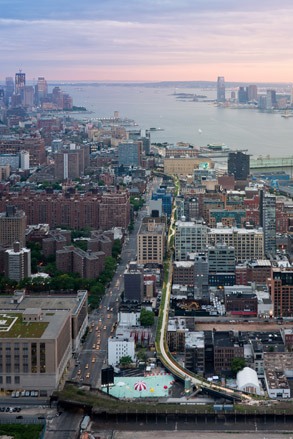
Constructed in the 1930s to lift dangerous freight trains off the streets, the High Line languished unused for three decades (the last train passed along it in 1980) until a group of New Yorkers had the bright idea to turn it into a very modern breed of public park in 2009. Now the second phase of its glorious reincarnation has just been unveiled, complete with wooded hillocks, stretches of lawn and even a series of art installations by acclaimed names.
The new stretch doubles the length of the park. Now one mile long, it winds its way from Gansevoort Street to West 30th Street, connecting the Meatpacking District, West Chelsea and Midtown West along the way, and hurtling the city towards a new phase of regeneration. Flanked by new buildings by the likes of Frank Gehry, Jean Nouvel and Neil Denari, the first section has been dubbed 'architect's row', attracting more than $2 billion in private investment to the area, and the new section is expected to do the same.
To mark its opening, ten dancers from the Trisha Brown Dance Company stepped onto different rooftops surrounding the southern end of the High Line to perform Roof Piece - the seminal work of the company's eponymous founder, a postmodern dance icon who fuses choreography with the visual arts. This was its first outdoor performance since its premier in 1971. As one dancer began improvising fluid movement signals, these were swiftly picked up by the next dancer, so that the piece appeared to ricochet across the rooftops. Unable to see all the dancers all at once, visitors strolled along the High Line to see the performance from different vantage points.
Roof Piece is one of five art commissions for the High Line that include an architecturally inspired sculpture from Sarah Sze; a sound installation, titled Digital Empathy by Julianne Swartz, transmitted through the park's bathroom sinks, water fountains and elevators; a rooftop sculpture by Kim Beck; and a series of photographs presented on a billboard next to the Line at West 18th Street.
Like with the first section, the planting on section two is inspired by the wild, self-seeded landscape that sprung up naturally on the High Line when the trains stopped running in 1980 and the design retains the original railroad tracks and Art Deco railings. Highlights include the Wildflower Field between West 26th and West 29th Streets, and the 'Falcone Flyover' between West 25th and West 26th Streets, where a walkway rises eight feet above the line, allowing visitors to walk through a canopy of sumac and magnolia trees and see the city beyond.
The park is the brainchild of a group called Friends of the High Line (headed by Joshua David and Robert Hammond), who formed in 1999 when the disused track was under threat of demolition. Spotting the promise in the gritty but wild and serene stretch of line raised 30ft above the busy streets of Manhattan, they called in the services of landscape architecture practice James Corner Field Operations, architects Diller Scofidio + Renfro and planting guru Piet Oudolf, to turn it into the feat of high design greenery it is today. Plans are now afoot to reclaim the final section of the track and complete the verdant trail through the heart of the city.
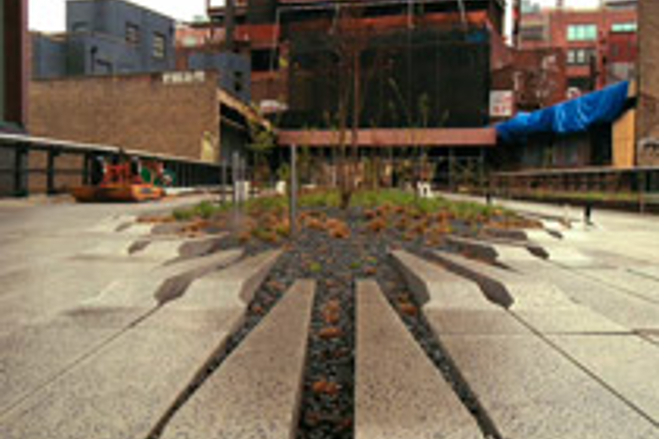
Watch a film we commissioned in 2009 about the transformation of the first section of the High Line
Wallpaper* Newsletter
Receive our daily digest of inspiration, escapism and design stories from around the world direct to your inbox.
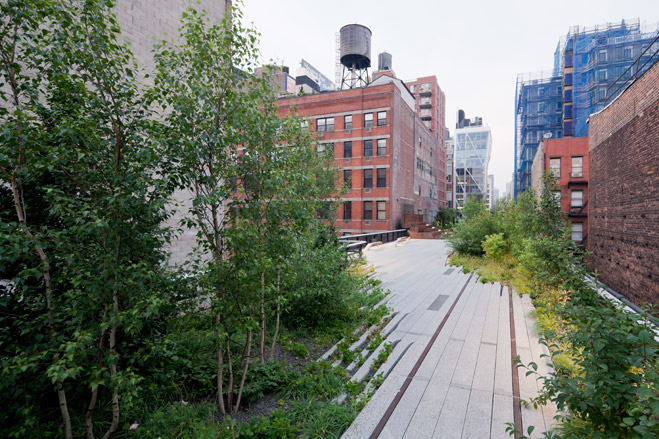
Section two
Like with the first section, the planting on the new stretch is inspired by the wild, self-seeded landscape that sprung up naturally on the High Line when the trains stopped running in 1980. Chelsea Thicket (pictured) is a densely planted area of trees and shrubs between West 20th and West 22nd Streets
©Iwan Baan, 2011
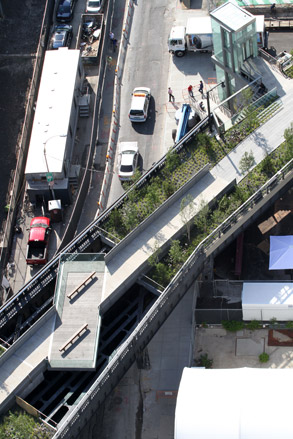
Section two
The design retains the original railroad tracks and Art Deco railings. For this section, named the 30th Street Cut-Out and Viewing Platform, the concrete decking has been removed to expose the steel grid work and street below
©Friends of the High Line, 2011
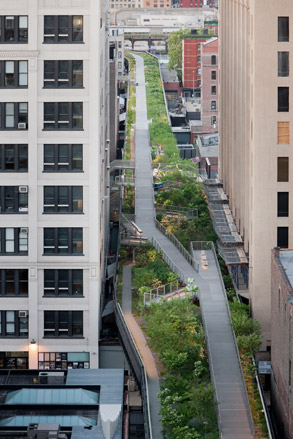
Section two
Between West 25th and West 27th Streets, Falcone Flyover incorporates a metal walkway raised 8ft above the High Line, allowing groundcover plants to blanket the terrain below, and carrying visitors upward into a canopy of sumac and magnolia trees
©Iwan Baan, 2011
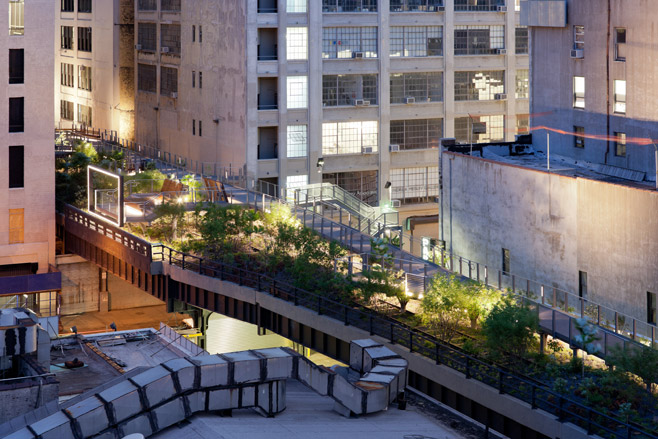
Section two
Aerial view of Falcone Flyover, at West 26th Street
©Iwan Baan, 2011
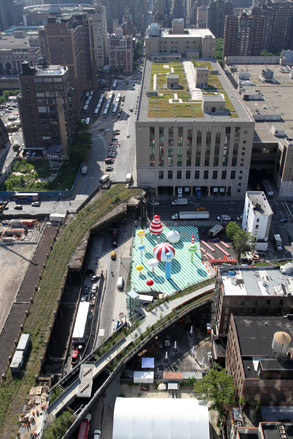
Section two
To the right of the High Line is Rainbow City, an environmental and interactive art installation by FriendsWithYou and presented by AOL, on view from June to early July at The Lot, a temporary public plaza at West 30th Street
©Friends of the High Line, 2011
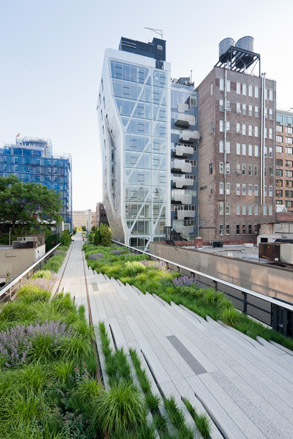
Section two
A meandering pathway passes by old and new architecture in West Chelsea, between West 24th and West 25th Streets
©Iwan Baan, 2011
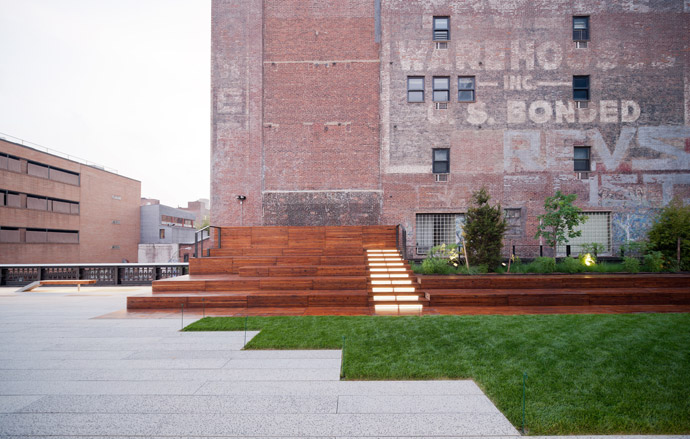
Section two
23rd Street Lawn and Seating Steps, a gathering space between West 22nd and West 23rd Streets
©Iwan Baan, 2011
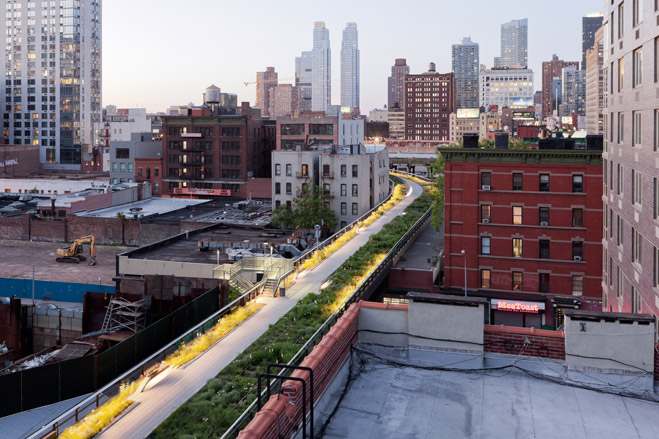
Section two
Wildflower Field, looking North toward West 29th Street, where the High Line begins a long, gentle curve toward the Hudson River
©Iwan Baan, 2011
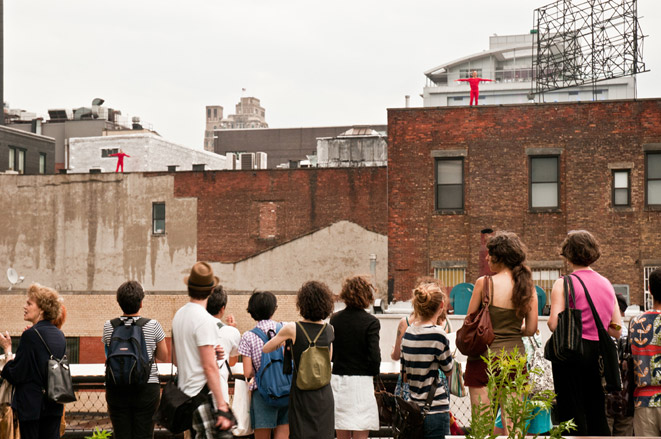
Section two
Marking the opening of the new stretch of the High Line, Trisha Brown Dance Company staged a performance of Brown’s seminal work, ’Roof Piece’ from 1971, atop the surrounding buildings. New Yorkers gathered to watch the action
Roof Piece, 2011. Courtesy of the Trisha Brown Dance Company and Friends of the High Line
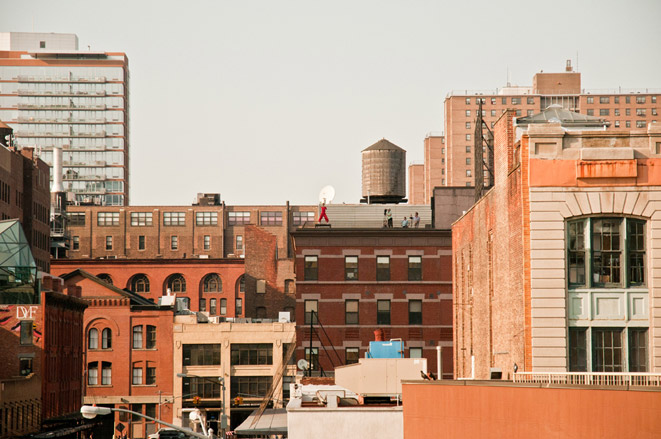
Section two
As one dancer began improvising fluid movement signals, these were swiftly picked up by the next dancer, so that the piece appeared to ricochet across the rooftops
Roof Piece, 2011. Courtesy of the Trisha Brown Dance Company and Friends of the High Line
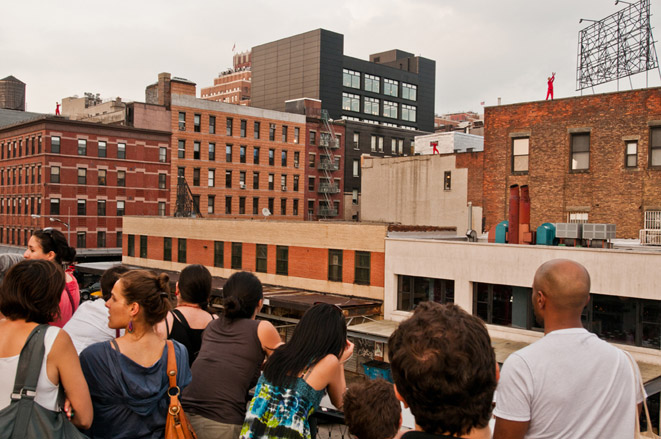
Section two
Unable to see all the dancers at once, visitors strolled along the High Line to see them from different vantage points
Roof Piece, 2011. Courtesy of the Trisha Brown Dance Company and Friends of the High Line
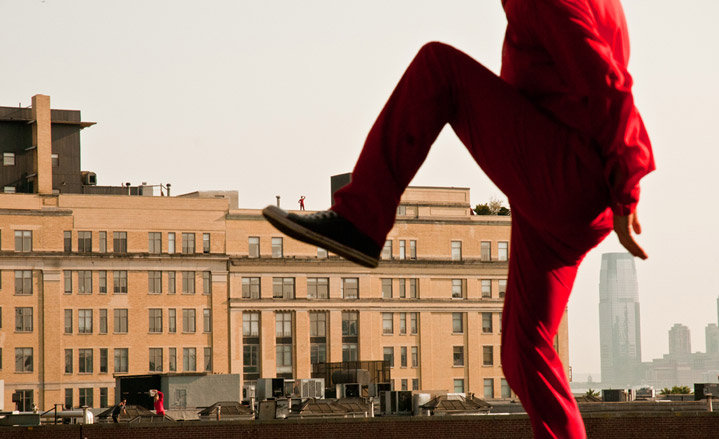
Section two
Trisha Brown is an icon of posmodern dance. With strong Minimal roots, she creates performances that defy the limits of traditional dance and incorporate aspects from the visual arts
Roof Piece, 2011. Courtesy of the Trisha Brown Dance Company and Friends of the High Line
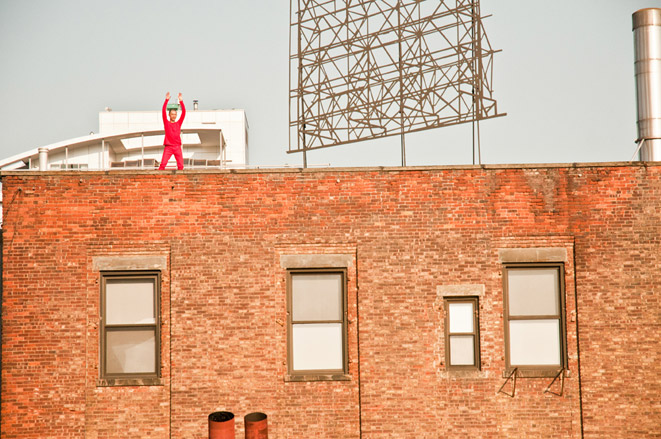
Section two
Brown’s work plays with the concept of space and physics, which lent it perfectly to the the architectural setting
Roof Piece, 2011. Courtesy of the Trisha Brown Dance Company and Friends of the High Line
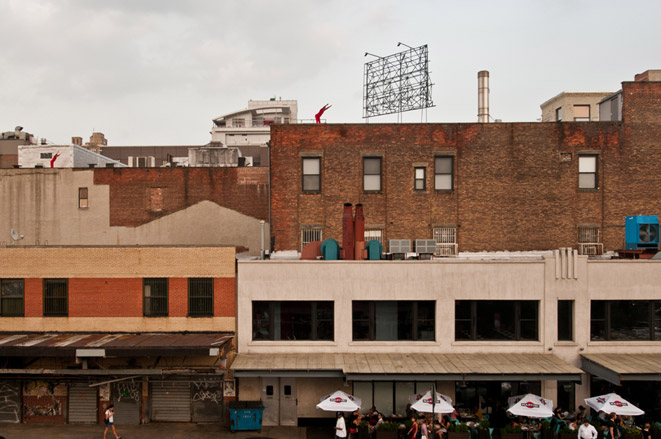
Section two
This performance - also marking the 40th anniversary of Trisha Brown Dance Company - was the first time the work has been staged in its original roof top context since its premiere in 1971
Roof Piece, 2011. Courtesy of the Trisha Brown Dance Company and Friends of the High Line
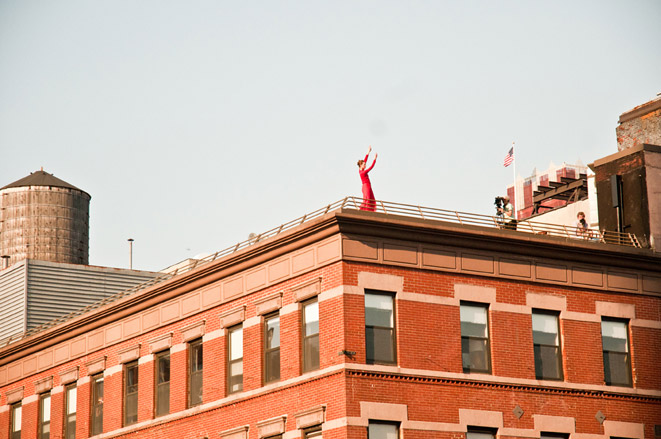
Section two
Roof Piece was performed four times during the first days of the new section of the High Line’s opening, and is one of a series of works of art commissioned by Friends of the High Line
Roof Piece, 2011. Courtesy of the Trisha Brown Dance Company and Friends of the High Line
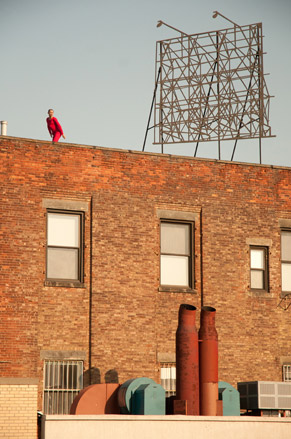
Section two
A dancer peforms in front of a sculpture by artist Kim Beck
Roof Piece, 2011. Courtesy of the Trisha Brown Dance Company and Friends of the High Line
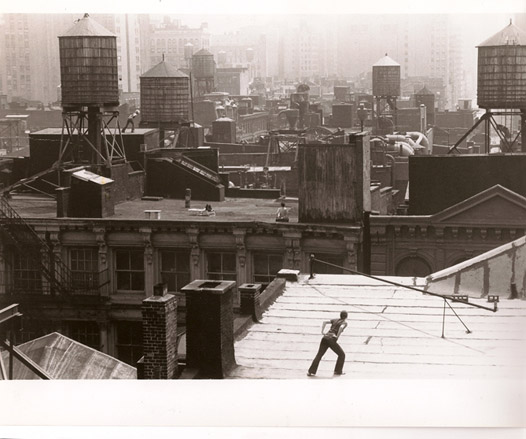
ection two
The original performance of ’Roof Piece’ by Trisha Brown in 1971
Courtesy of the Trisha Brown Dance Company
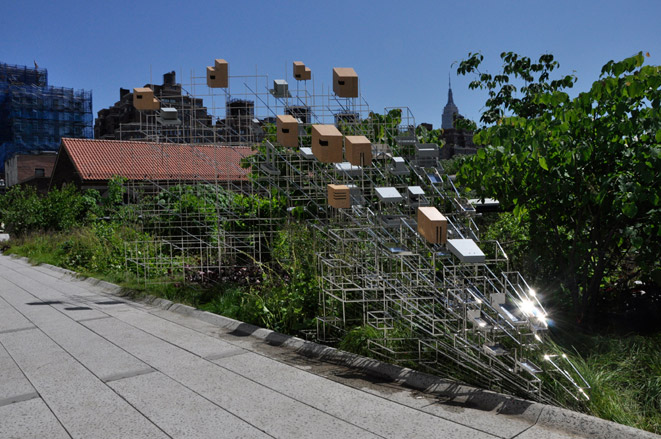
Section two
Other art commissions for the new stretch of the High Line include an architectural sculpture by Sarah Sze, titled ’Still Life with Landscape (Model for a Habitat)’, 2011
Courtesy of Friends of the High Line
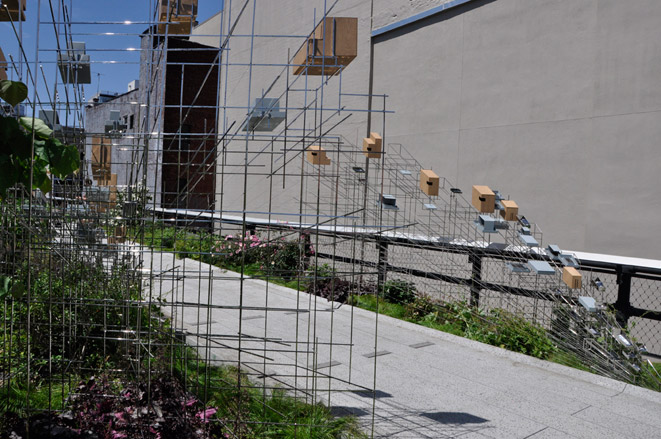
Section two
It forms an open gateway that visitors can walk through, and its architecture acts as a bird, butterfly and insect observatory, with perches, feeding spots and bird baths
Courtesy of Friends of the High Line
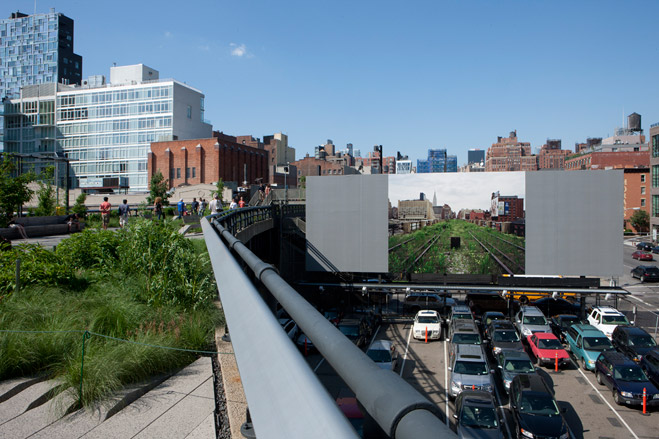
Section two
’A Rail Road Artifact’ by Joel Sternfeld (30th St, May 2000, 2000/2010) is the first work in Landscape with Path, a series of photographs that will be presented on a large billboard next to the High Line at West 18th Street
Courtesy of Friends of the High Line
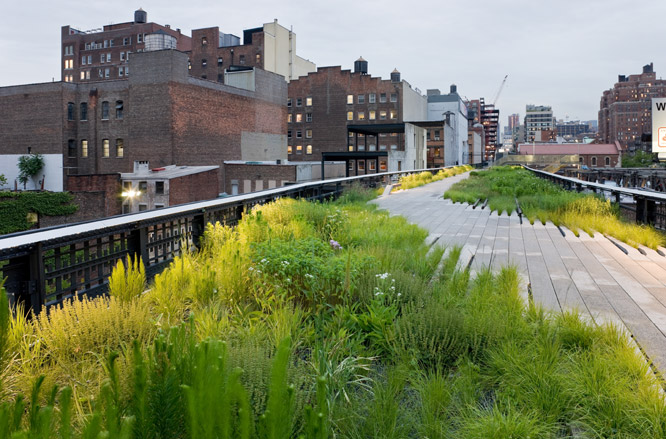
Section one
Opened in June 2009, the first stretch of the High Line park runs between Gansevoort Street and West 20th Street. The Chelsea Grasslands is a prairie-like lanscape between West 19th Street and West 20th Street
©Iwan Baan, 2009
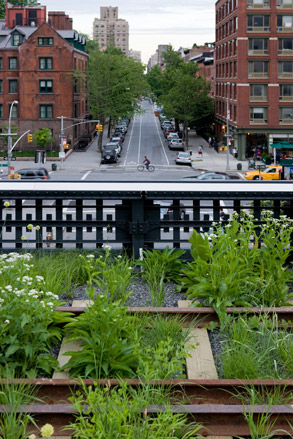
Section one
The High Line is elevated 30ft above the street. This photograph looks east towards West 20th Street
©Iwan Baan, 2009
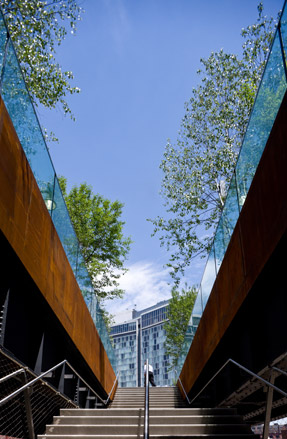
Section one
Gansevoort Slow Stair access point on the corner of Gansevoort Street and Washington Street
©Iwan Baan, 2009
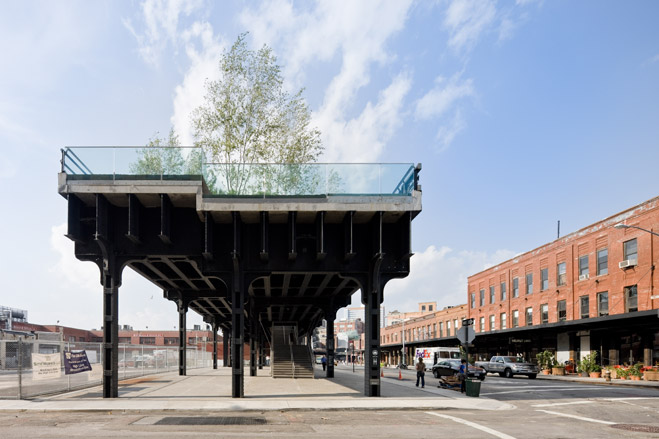
Section One
Gansevoort End, Plaza, and stairs at Gansevoort and Washington Streets
©Iwan Baan, 2009
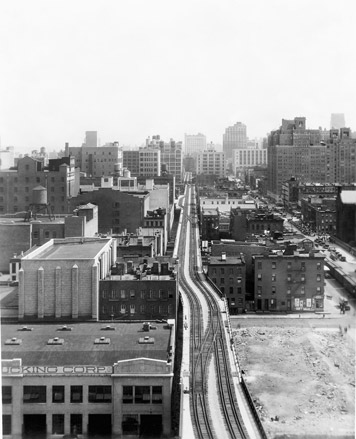
From the archives
This photograph shows the High Line in 1934, the year it opened to trains
© Friends of the High Line, 2011

From the archives
The High Line was constructed in order to lift dangerous freight trains off the streets. Photographed from West 17th Street, looking north, in 1934
© Friends of the High Line, 2011
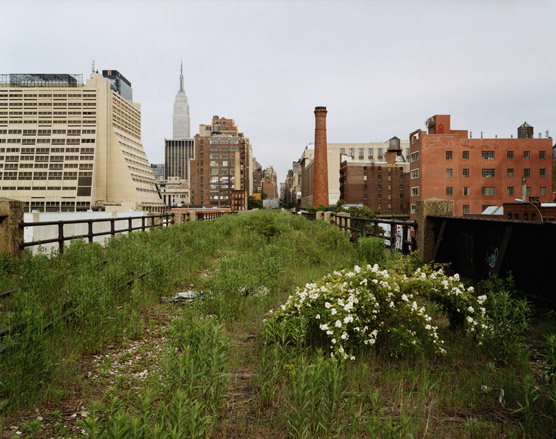
From the archives
When the trains stopped running in 1980, the tracks lay unused for three decades and it became a wild, self-seeded habitat, which inspired its transformation into a park. Photographed at 30th Street on a morning in May, 2000
Joel Sternfeld © 2000
Malaika Byng is an editor, writer and consultant covering everything from architecture, design and ecology to art and craft. She was online editor for Wallpaper* magazine for three years and more recently editor of Crafts magazine, until she decided to go freelance in 2022. Based in London, she now writes for the Financial Times, Metropolis, Kinfolk and The Plant, among others.
-
 Put these emerging artists on your radar
Put these emerging artists on your radarThis crop of six new talents is poised to shake up the art world. Get to know them now
By Tianna Williams
-
 Dining at Pyrá feels like a Mediterranean kiss on both cheeks
Dining at Pyrá feels like a Mediterranean kiss on both cheeksDesigned by House of Dré, this Lonsdale Road addition dishes up an enticing fusion of Greek and Spanish cooking
By Sofia de la Cruz
-
 Creased, crumpled: S/S 2025 menswear is about clothes that have ‘lived a life’
Creased, crumpled: S/S 2025 menswear is about clothes that have ‘lived a life’The S/S 2025 menswear collections see designers embrace the creased and the crumpled, conjuring a mood of laidback languor that ran through the season – captured here by photographer Steve Harnacke and stylist Nicola Neri for Wallpaper*
By Jack Moss